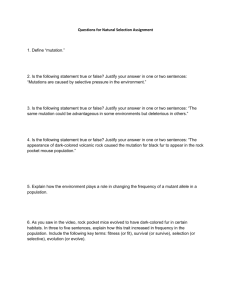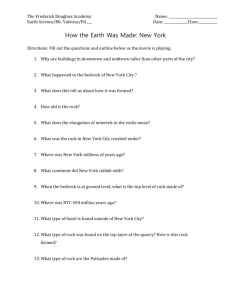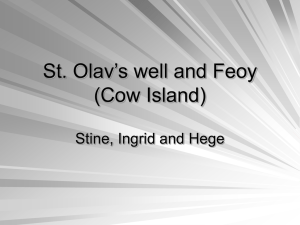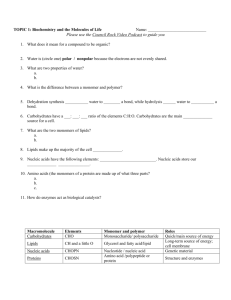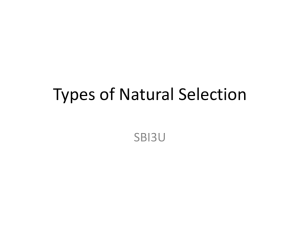Activity 2 : Natural Selection in Action
advertisement
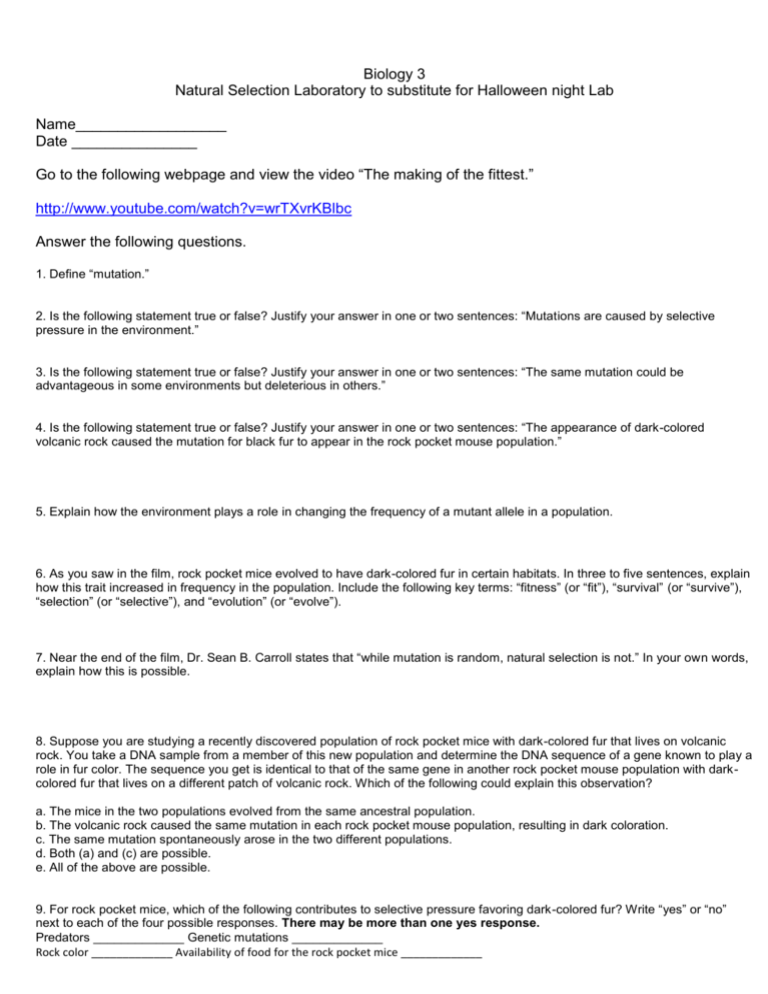
Biology 3 Natural Selection Laboratory to substitute for Halloween night Lab Name__________________ Date _______________ Go to the following webpage and view the video “The making of the fittest.” http://www.youtube.com/watch?v=wrTXvrKBlbc Answer the following questions. 1. Define “mutation.” 2. Is the following statement true or false? Justify your answer in one or two sentences: “Mutations are caused by selective pressure in the environment.” 3. Is the following statement true or false? Justify your answer in one or two sentences: “The same mutation could be advantageous in some environments but deleterious in others.” 4. Is the following statement true or false? Justify your answer in one or two sentences: “The appearance of dark-colored volcanic rock caused the mutation for black fur to appear in the rock pocket mouse population.” 5. Explain how the environment plays a role in changing the frequency of a mutant allele in a population. 6. As you saw in the film, rock pocket mice evolved to have dark-colored fur in certain habitats. In three to five sentences, explain how this trait increased in frequency in the population. Include the following key terms: “fitness” (or “fit”), “survival” (or “survive”), “selection” (or “selective”), and “evolution” (or “evolve”). 7. Near the end of the film, Dr. Sean B. Carroll states that “while mutation is random, natural selection is not.” In your own words, explain how this is possible. 8. Suppose you are studying a recently discovered population of rock pocket mice with dark-colored fur that lives on volcanic rock. You take a DNA sample from a member of this new population and determine the DNA sequence of a gene known to play a role in fur color. The sequence you get is identical to that of the same gene in another rock pocket mouse population with darkcolored fur that lives on a different patch of volcanic rock. Which of the following could explain this observation? a. The mice in the two populations evolved from the same ancestral population. b. The volcanic rock caused the same mutation in each rock pocket mouse population, resulting in dark coloration. c. The same mutation spontaneously arose in the two different populations. d. Both (a) and (c) are possible. e. All of the above are possible. 9. For rock pocket mice, which of the following contributes to selective pressure favoring dark-colored fur? Write “yes” or “no” next to each of the four possible responses. There may be more than one yes response. Predators _____________ Genetic mutations _____________ Rock color _____________ Availability of food for the rock pocket mice _____________ Activity 2 : Natural Selection in Action Purpose: To explore natural selection in a small sample population of animals introduced to an island. Terms: adaptation, allele, fitness, founder effect, gene, genetic drift, population Objective: Students will explore how environmental factors influence allele selection resulting from the founder effect, a form of genetic drift. Background Information: During this activity you, the student, will confront a scenario in which a small group of horse-like animals are intentionally removed from their main population and transferred to an island that has a slightly different environment. This small random sample of the population has less genetic diversity then the population of origin. This is an example of genetic drift, specifically, the founder effect, which will have an influence on the allele selection that can occur as this new population changes in this slightly different environment. There are less alleles to choose from than the population of origin. For simplicity sake, there are only two alleles for each trait, although this would probably not be the case in a real population and we assume no mutations occur. Since there are only two alleles for each trait, students will have to choose which allele they think gives individuals in this population a reproductive advantage. Other alleles will give no advantage; students will have to distinguish these. For example, animals will be faced with a new food source that turns bright red in color when ripened and that is higher up in trees than their previous food source. Animals with long necks and color vision will probably have an advantage, reaching more food and being healthier than their short-necked, colorblind peers. The temperature on this island is slightly colder than that of the land of origin; therefore, longer fur may give the animals an advantage. There are no natural enemies on the island; therefore, alleles for traits that are for selfdefense will not provide a reproductive advantage. Natural Selection in Action Table One: A small population of horse-like animals have been removed from a large population of the same creatures and moved to a small island many miles away. The environment of this island is slightly different then the mainland: temperatures are cooler, and the only food source is a fruit that turns bright red when ripe and is located higher up in the trees. The island is only a few square kilometers, and there are no natural enemies. After many generations you return back to the island and examine that the animal has physically changed as a result of being moved to a new environment. Examine each of the possible alleles for the traits below. Choose an allele for each trait that you believe the animals will possess and explain why you chose that answer. Allele one Long hair Allele two Short hair Blue eyes Brown eyes Long tail Short tail Long neck Short neck Justification Good hearing Poor hearing Fast runner Slow runner Color vision No color vision Long nose Short nose Long tongue Short tongue Questions 1. Which of the traits provided no particular advantage to the animal in reproducing? How could you determine this? 2. Why would it be correct to state that this small group of animals reaching and then inhabiting the island was an example of the founder effect, a form of genetic drift? 3. Do you think the future animal will look the same as the population on the mainland from which the animals originated? Explain your answer. 4. What environmental factors do you believe influenced the changes in allele selection? 5. What are adaptations? What adaptations do you think will occur to the animals on the island? 6. Why is it true that the animals found on the island after many generations have greater “fitness” than the animals first introduced to the island? 7. Suppose the water table around the island dropped and the island and mainland were once again joined. What effect would the migration of these animals back to the main population be on the allele frequencies?
